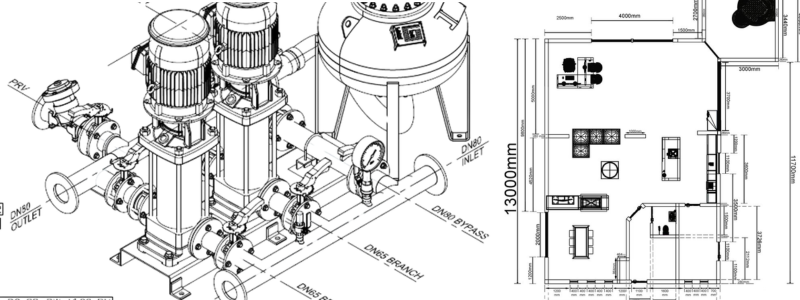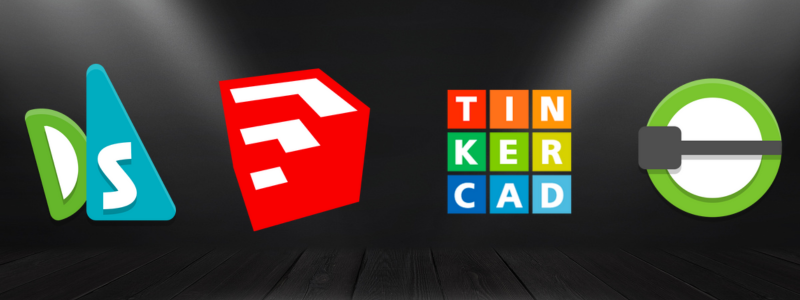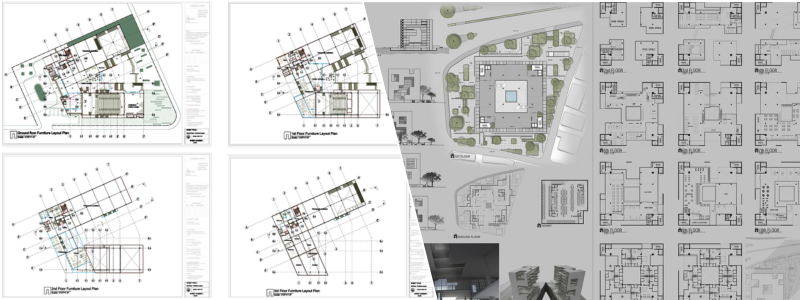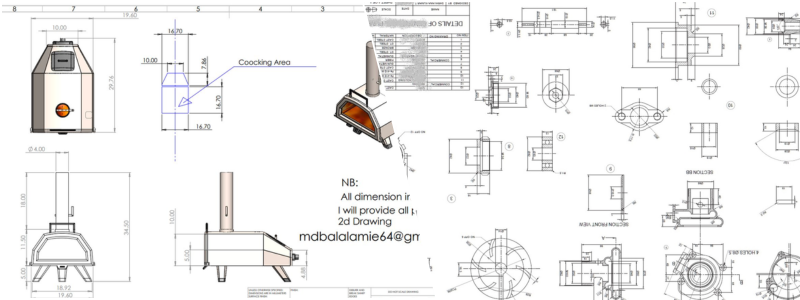Believe it or not, many organizations still use paper-based methods when exploring initial concept designs. Although there’s nothing wrong with it, especially during the early stages of concept work, it has its own set of limitations. Making paper concept designs for the subsequent development stages will involve more work and effort. Investigating and evaluating different design options is also tricky.
On the other hand, it’s still more straightforward and affordable to stick with 2D CAD. It’s also a great option if you’re just getting started. This article reviews the pros and cons of digital concept designs in 2D CAD for companies.
What is 2D CAD?
2D CAD is a CAD or computer-aided design file that features a two-dimensional representation of a part or object. 2D CAD drafting services are often used in the manufacturing and engineering industries to communicate and present design details to the rest of the people in the production process.
2D CAD drawing software allows engineers and designers to develop precise and accurate drawings of assemblies and parts. These drawings can include annotations, dimensions, measurements, and other information critical for manufacturing. 2D CAD drawings are typically used to develop blueprints, schematics, and technical drawings. These also come in handy to specify tolerances, communicate the intent of the design, and convey other essential details to those who are part of the production process.
It’s possible to save 2D CAD drawing files in different formats, such as PDF, DXF, and DWG. These files are also shareable electronically with everyone in the production process, simplifying collaboration and allowing changes to be made whenever necessary. With the help of 2D CAD, engineers can also create detailed drawings in 2D for CNC machining parts.
RELATED: Architectural Plans, CAD Drawing Costs & Architect Service Pricing
How to make 2D drawings in CAD

Below are the basic steps involved in drawing in 2D CAD:
- Open a new 2D CAD drawing file in the CAD software. Select the suitable scale and units for the drawing.
- Create a new layer for the drawing first. It will help organize the drawing and let you control its different parts and elements.
- Use suitable drawing tools to start drawing the 2D geometry. Many CAD software tools let you draw lines, rectangles, arcs, circles, and other geometric shapes.
- Refine and modify the drawing as necessary with the editing tools. You can use different tools to tweak existing geometry, including chamfer, extend, fillet, and trim.
- Include annotations and dimensions in the drawing. The dimensions are used to specify the location and size of the geometry. Annotations are used to include additional details about the drawing.
- Add layers to control the visibility of different parts of the drawing. Different line types and colors can be assigned to different layers to simplify distinguishing between different parts of the drawing.
- Save the drawing in the suitable file format. Typically, 2D CAD software supports different file formats like PDF, DXF, and DWG.
RELATED: CAD File Conversion Costs, File Type Conversion Rates & Services Pricing
Popular 2D CAD programs

The market is now filled with different 2D CAD programs. The following are some of the easiest to learn and most user-friendly:
DraftSight is a professional-grade 2D CAD program with a free version for personal use. Its user interface looks and feels familiar and provides extensive editing and drawing tools.
It is an open-source and free 2D CAD program that is easy to use and has basic features and drawing tools.
SketchUp is a popular 3D modeling tool, but it also comes with 2D CAD drawing capabilities. It has an intuitive and simple interface and is usually used for interior design and architectural projects.
Tinkercad is a free 3D modeling and design tool with 2D capabilities. This is developed for beginners and provides a simple, easy-to-use drag-and-drop interface.
Pros of 2D CAD for digital concept designs
Cost-effective
2D CAD solutions are considered more cost-effective than advanced 3D CAD. The cost of working with a 2D CAD expert is also reduced because you can get the output of your project in less time. The designs are also easy to understand and can meet expectations in just one go. This saves you from worries because you no longer have to hire experts for pricey alterations. In addition, 2D CAD drawing software is typically cheaper than 3D CAD software.
Easy to learn
2D CAD drawing is simpler than 3D modeling so that you can learn it quickly. While 3D CAD tools provide designers with different functions, most are not necessarily required to produce drawings for component plans, piping, assembly, and more. On the other hand, 2D CAD tools only contain essential functions that are easy to operate and understand (i.e., line weights, line types, layers, etc).
Error-free
Since the number of manual calculations is reduced, 2D CAD has minimal room for mistakes and errors. Design engineers can digitally develop different mechanical components with exact dimensions and tweak them according to the requirements.
2D CAD tools can also automatically calculate the specific changes made in various factors. It also includes inputs on the designs built in the past. You can get faster and more accurate iterations of existing designs with minimal manual inputs.
Faster processing
The files of 2D CAD drawings are smaller than 3D models, making their processing and sharing faster than ever.

Flexible design
One of the most notable perks of using 2D CAD is that you can quickly amend the designs. Unlike the conventional paper-based models, it will only take a few clicks to alter the layout on the digital platform. You can experiment with different options until you find the design satisfactory. A skilled drafter can create a realistic reproduction of the final product and present how the different elements will fit and blend in a defined space.
Precision
2D CAD drawings are often exact, allowing designers to specify exact dimensions and measurements.
QCAD
QCAD is a 2D CAD program made explicitly for new CAD users. QCAD has an intuitive and straightforward interface with basic editing and drawing tools.
Time-saving
2D CAD software can calculate the most updated or added calculations with minimal manual input. This allows the designer to focus on the areas that need more attention. Digital drawings can also be shared faster among all the involved teams. This will ensure that everyone is always on the same page, and if a team member ever finds any change or error, it can be solved immediately. It makes developing designs of materials, fabrication detailing, manufacturing, or other units quicker than ever.
Versatility
2D CAD drawings apply to many applications, such as architecture, graphic design, and engineering.
RELATED: Why You Should Outsource to CAD Drawing and Drafting Services
Cons of 2D CAD for digital concept designs
Limited visualization
2D CAD drawings can only offer a flat, two-dimensional view of objects. As a result, they cannot convey any perspective or depth.
Inadequate information
2D CAD drawings cannot convey all the details in a 3D model, including the material’s volume, weight, and properties.
Insufficient interactivity
2D CAD drawings are static, which means that you cannot manipulate them in the same way that you do with 3D models.
Restricted simulation
You cannot use 2D CAD drawings to simulate the performance of an object under real-world conditions such as fluid flow, strain, and stress.
Minimal options for design
2D CAD drawings are only limited to flat shapes in two dimensions. They cannot convey or present more complex assemblies or geometries.

When should you use 2D CAD drawings over 3D models?
- Designs are only required for one component.
- The project has tight completion deadlines.
- The drawings need less space.
- The models don’t require any 3D functionality.
Can you combine 2D with 3D CAD?
Using 3D and 2D together can help you optimize the project faster and easier. It is a hybrid approach that can lower manual updates and enhance interoperability.
2D CAD can also help develop drawings for the shop floor requirements and even share them with the rest of the team members. 3D CAD tools, on the other hand, can help perform error detection, visualization, and design analysis.
How Cad Crowd can help
Even with the rise of 3D CAD models, engineering CAD designs still require 2D CAD drawings. The design engineers continue to use 2D drafting in almost 50% of the entire CAD software utilization. Cad Crowd is a platform used to find professionals specializing in 2D CAD design services and 3D CAD.
